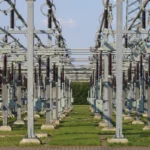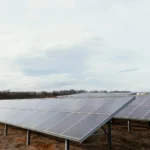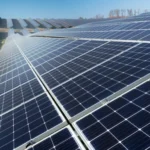Breakthrough in Solar Technology: 33.2% Efficient Perovskite-Silicon Cell
Breakthrough in Solar Technology: 33.2% Efficient Perovskite-Silicon Cell
Scientists at the King Abdullah University of Science and Technology (KAUST) claimed to have created a perovskite-silicon tandem solar cell with a record energy conversion efficiency of 33.2%.
The efficiency achieved at the KAUST Solar Center has been certified by the European Solar Test Installation (ESTI) and listed on the National Renewable Energy Laboratory’s (NREL) Best Research-cell Efficiency Chart.
Researchers combined perovskite top cells on industrially compatible, two-sided, textured silicon bottom cells to obtain the tandem solar cell.
They observed that the perovskite top layer absorbed blue light best, while the silicon foundation absorbed red light best.
The KASUT team has been working on how to uniformly cover the micrometer-sized pyramidal surface of silicon cells with perovskite material since 2016.
The scientists found that combining these materials increased the capture and conversion of sunlight into electricity more efficiently than the conventional single-junction silicon counterparts.
Professor of Material Science and Engineering and Interim Associate Director of the KAUST Solar Center Stefaan De Wolf said, “This new record is the highest power conversion efficiency of any two-junction solar cell under non-concentrated light, showing the great potential of perovskite/silicon tandems to deliver ultra-high performance photovoltaic modules, which is critical to quickly achieve renewable energy goals towards fighting climate change.”
The research is a major breakthrough in the field of solar energy at a time when market predictions estimate the tandem perovskite/silicon technologies will make up over $10 billion of the global photovoltaic market share by 2032.
The KAUST team is exploring scalable methods to produce industrial-scale perovskite/silicon tandem cells with areas exceeding 240 square centimeters.
The efficiency achieved by the KASUT team also surpassed the earlier record of 32.5% achieved by researchers at the Helmholtz-Zentrum Berlin for tandem solar cells.
Last month, Italy-based renewable energy company Enel Green Power, researchers at the National Solar Energy Institute, and the French Alternative Energies and Atomic Energy Commission claimed to have achieved a power conversion efficiency of 26.5% for a 2-terminal tandem perovskite solar cell.
Suggested Articles

Haryana’s GEOA 2025: A Boost for Captive Solar Plants and Wind Energy Developers
Haryana’s GEOA 2025 paves the way for growth in captive wind and solar energy projects with investor-friendly reforms.

Introducing the ESS-2000-24V Hybrid Solar Inverter: Smart Power for Modern Homes & Businesses
The ESS-2000-24V Hybrid Solar Inverter delivers intelligent power management for homes and businesses. With advanced solar charging, lithium battery support, and seamless backup, it ensures uninterrupted, efficient, and clean energy for modern users.

Higher Electricity Bills in Haryana as Fuel Surcharge Rises
Haryana consumers are facing higher electricity bills after the Haryana Electricity Regulatory Commission (HERC) approved a fuel surcharge hike for DHBVN and UHBVN areas. The increase reflects rising fuel and power purchase costs, directly impacting domestic, commercial, and industrial users across the state.

100 kW Solar Power Plant Cost in Haryana: The Ultimate Guide to the Best Rate Per Watt
Explore the 100 kW solar power plant cost in Haryana for 2025. Learn about pricing, government subsidy options, and how much you can save with solar energy.

7 Common Myths about Solar Energy in India
Solar power is not only less expensive, but it is also the most abundant source of clean energy.

Top 10 Sustainable Building Practices to Consider for Your Construction Business
The construction industry is embracing sustainability like never before. From smart design to renewable energy use, these top 10 practices ensure businesses stay competitive, compliant, and environmentally responsible.

Solar for Industrial Use in India: Costs, Benefits & Energy Savings Explained
Solar for industrial use in India is rapidly transforming how factories manage energy costs and efficiency. This guide covers system sizes, costs, benefits, ROI, and how solar energy helps manufacturing units, warehouses, and industrial plants reduce power bills and ensure long-term sustainability.

How Installers Cut Costs on Solar PV Module Mounting Structures
Solar PV mounting structures can significantly impact project cost. Explore how expert installers optimize design, materials, and labor to achieve safe, durable, and cost-effective solar installations